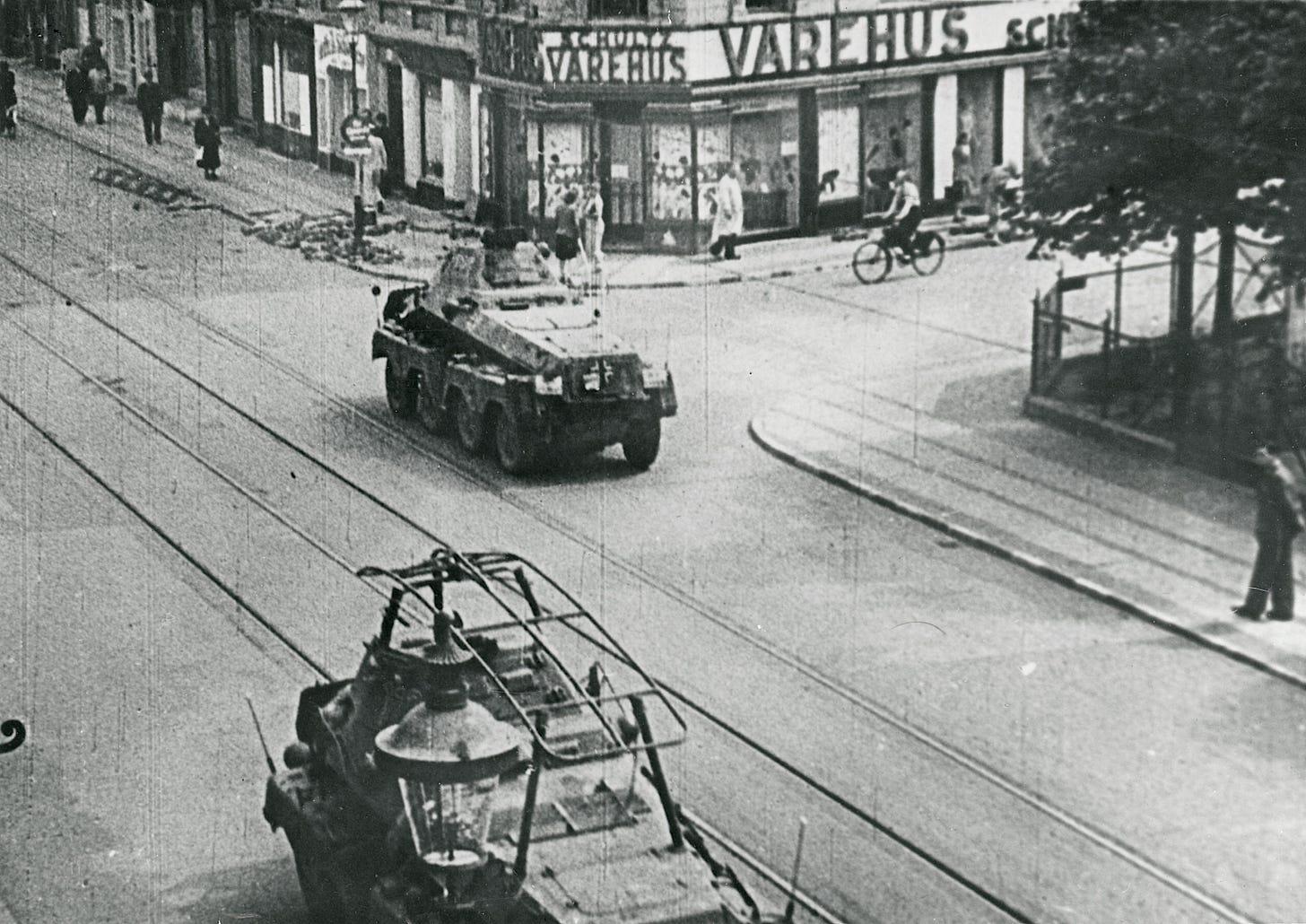Joseph Smith - The Prophet of the Lord
It is June 1944. The stage is set. The actors are ready. A telling of Joseph Smith's life is prepared by Danish Latter-day Saints. Suddenly armed German soldiers take to the streets amid chaos...
In late June 1944, smoke billowed down the streets of Copenhagen. Bonfires were lit on the street next to barricades hastily made out of furniture, vehicles, and whatever else could be gathered. Seething unrest burned deep in the hearts of Danish men and women who were openly defying their German occupiers. Tensions had been building since August 1943 when the Danish government was dissolved by the Germans. Now, almost a year later, a General Strike had been called to protest the occupation of Denmark and to oppose the ongoing martial law. ‘D-day’, also known as Operation Neptune, had begun several weeks earlier with a seaborne invasion of Northern France by Allied Forces. Danish insubordination meant additional forces had to remain in the area and could not be redeployed to France.
Meanwhile, Danish leaders of The Church of Jesus Christ of Latter-day Saints were busy preparing the final touches for a conference of leaders and members from across Denmark. A week-long series of meetings was being held to commemorate the 100th anniversary of the martyrdom of Joseph Smith. The Saints in Copenhagen had agreed to host those from other parts of the country to enable them to be in attendance at the conference.1
In 1944 the Church in Denmark was small. Years of emigration had drained the country of many strong members and the withdrawal of missionaries in 1939 had shocked the Saints. Still, they persevered. Local members were called as missionaries and native Danes were fully responsible for the branches. Orson West, a 34-year-old Danish Latter-day Saint, was serving as the mission president. He had been born to Latter-day Saint parents in Aalborg, Denmark, but was not baptised until May 1929 when he was an adult. He was unmarried but was fiercely faithful to the gospel. Soon after his baptism he had served a full-time mission in Denmark. After the missionaries were withdrawn in 1939 he was made president of the mission. From 1939-1946 the Danish Saints weathered World War 2 under his capable leadership.
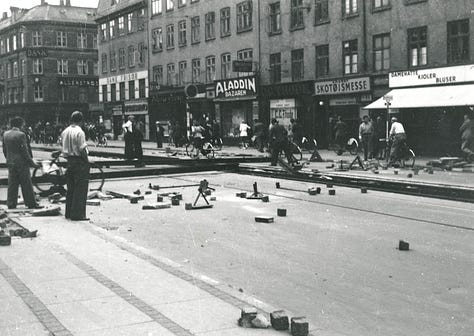
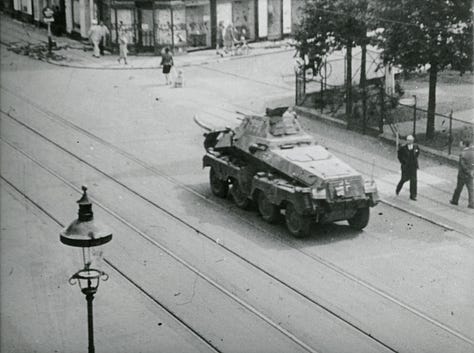

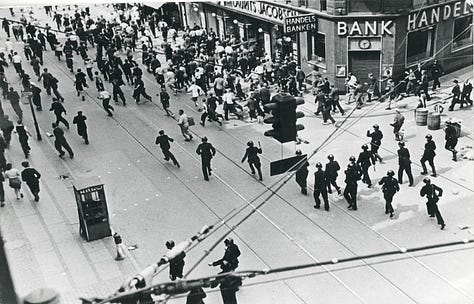

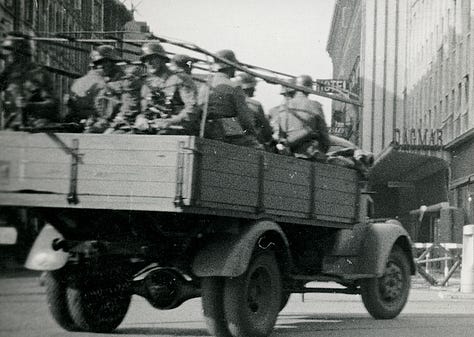

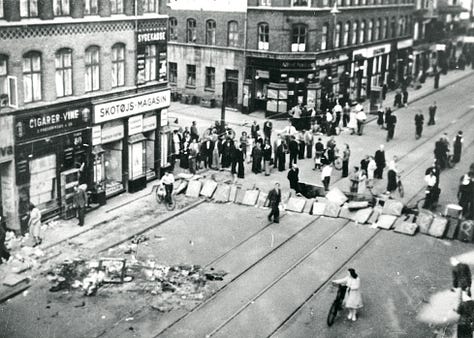

The conference began under the ominous shadow of public unrest. The first session was a Priesthood session on Sunday 24 June with more than 50 Elders from across the country in attendance. The event was described as being “uplifting to the highest degree.” As the day progressed bonfires burnt in the street as public resentment of the Germans began to boil over. The Saints, however, chose to focus on things of spiritual value. They sang hymns, listened to talks, and discussed spiritual matters. The conference had been organised by the mission in conjunction with the MIA. It was to include plays, services, the revealing of a memorial plaque, excursions, and much more. Despite the restrictions being introduced due to the unrest they managed to succeed in following much of the programme.

Over the following days things grew more serious. On 30 June armoured German cars were patrolling nearby streets and some accounts report Germans firing on protesting Danes.2 Fires burned, bullets were fired, and barricades were erected as Danes sought to oppose their overlords. Perhaps some members were involved, or maybe they were not. Most, however, sought refuge, spiritually and physically, in gathering together in worship and remembrance.
The Play
On Sunday evening, 24 June, Latter-day Saint leaders became aware that a new curfew was coming into effect the next day. It had been anticipated that two performances would be held of a specially commissioned play depicting the life of Joseph Smith. They planned to hold the performances on Thursday 28 June, but the curfew meant only one could take place. Despite the tumult around them, the Saints were keen to make it happen. Costumes were procured by Richard Gregersen, a Danish member, who also played an adult Joseph Smith. Out of necessity the chapel decorations were simple, but they worked well for the performance. Richard’s wife, Eva, provided the necessary instruction and artistic guidance for all involved, which included the many extras that portrayed the mob that killed Hyrum and Joseph. The play told the story of Joseph Smith’s life through to his martyrdom. The play had been written by President Orson West who was described as having a “well-known sense of cutting through all that is unimportant and penetrating to what matters.” The show was, by all accounts, a beautiful and moving scene performance.

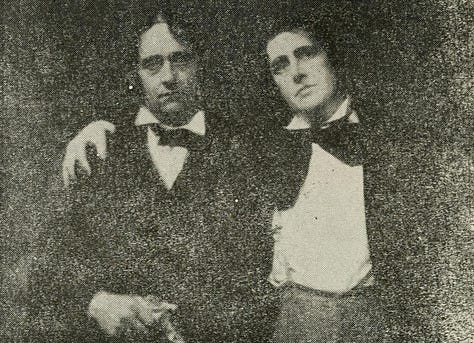

Despite being in the middle of a World War they made tremendous sacrifices to gather from around the country.
Despite the clashes, bonfires, and barricades around the city they made the effort to come together.
Despite many other pressing concerns, they clung to their identity as Latter-day Saints.
Despite the limiting factors of the war, they did what they could to support and sustain one another.
Commemoration & Consecration
The play and other conference events garnered considerable public attention despite what was going on around them. On 27 June Danish Radio issued several announcements concerning the Church’s celebrations. Newspapers also carried articles about the Church and its beliefs, as well as information about Joseph Smith. Later President Orson West commented:
“…the General Conference, in addition to bringing us spiritual enrichment, was the occasion for a unique information campaign which was happily a great success. Now let’s take advantage of the ground that has been laid!”3
Some of the publicity had announced that Danish members of the Church were holding a conference to celebrate the prophet’s contributions and remember his martyrdom. A memorial plaque was also unveiled at the Copenhagen Chapel. Saints from across the country who donated to the memorial had their names recorded on a piece of vellum which was later stored behind the plaque.4 Some members were unable to travel to the conference and on 27 June services were held in Aalborg with more than 60 people in attendance.
Some of the members in attendance had made sacrifices to be in attendance, and the journey home was not easy either. Frank Sandberg was born in 1927 to a Latter-day Saint family. His father, Emil, was a Swedish man who moved to Utah during the First World War and joined the Church. There he met a Dane and fellow Latter-day Saint, Thora, and they married in 1918. A few years later they returned to Denmark where Frank was born. They had faced some hardships from the Germans, but they retained their faith in the gospel. After the conference, Frank and Emil, along with two other Latter-day Saint men were headed to the Jutland peninsula. Their journey, however, was to be long and difficult.
Initially, they made their way to the train station only to find around 1,000 people sitting around. The General Strike and accompanying German crackdown had disrupted transport and people were left isolated and stuck. Eventually, after seeking lifts, walking, and some waiting, the father and son arrived in Roskilde. Here they found no accommodation and no food. It wasn’t long before Emil’s health began to fail him.
Tired and sweaty the two men took time to rest. They were exhausted from the travelling, the confusion, and the unclear route home. Thankfully, Emil struck up a conversation with an elderly lady who welcomed them into her home for the night and fed them. After a couple more days of travelling, filled with false leads and disappointments, they arrived home in Aalborg. The spiritually rich experience had come at a high price in time, energy, health, and finances, but they remained faithful. Frank emigrated to Utah after the war. There he took out his endowments, as did many other Danes who looked to build a new life in America.
Nearly all of those involved in the play emigrated to Utah to participate in sacred temple ordinances. Today, in a bizarre twist of fate, the very building they performed in is now a House of the Lord.
‘Generalkonferencen,’ Skandinaviens Stjerne, Vol. 93, No. 6 (1944), p. 92.
‘Nazis Fire on Curfew Breakers in Denmark,’ Army News, 29 June 1944, p. 1.
‘Aviserne og General-Konferencen,’ Skandinaviens Stjerne, Vol. 93, No. 9 (1944), pp. 149-151.
Danish Mission names of Church members in Denmark, 1944 June, LR 2217 43, CHL.


